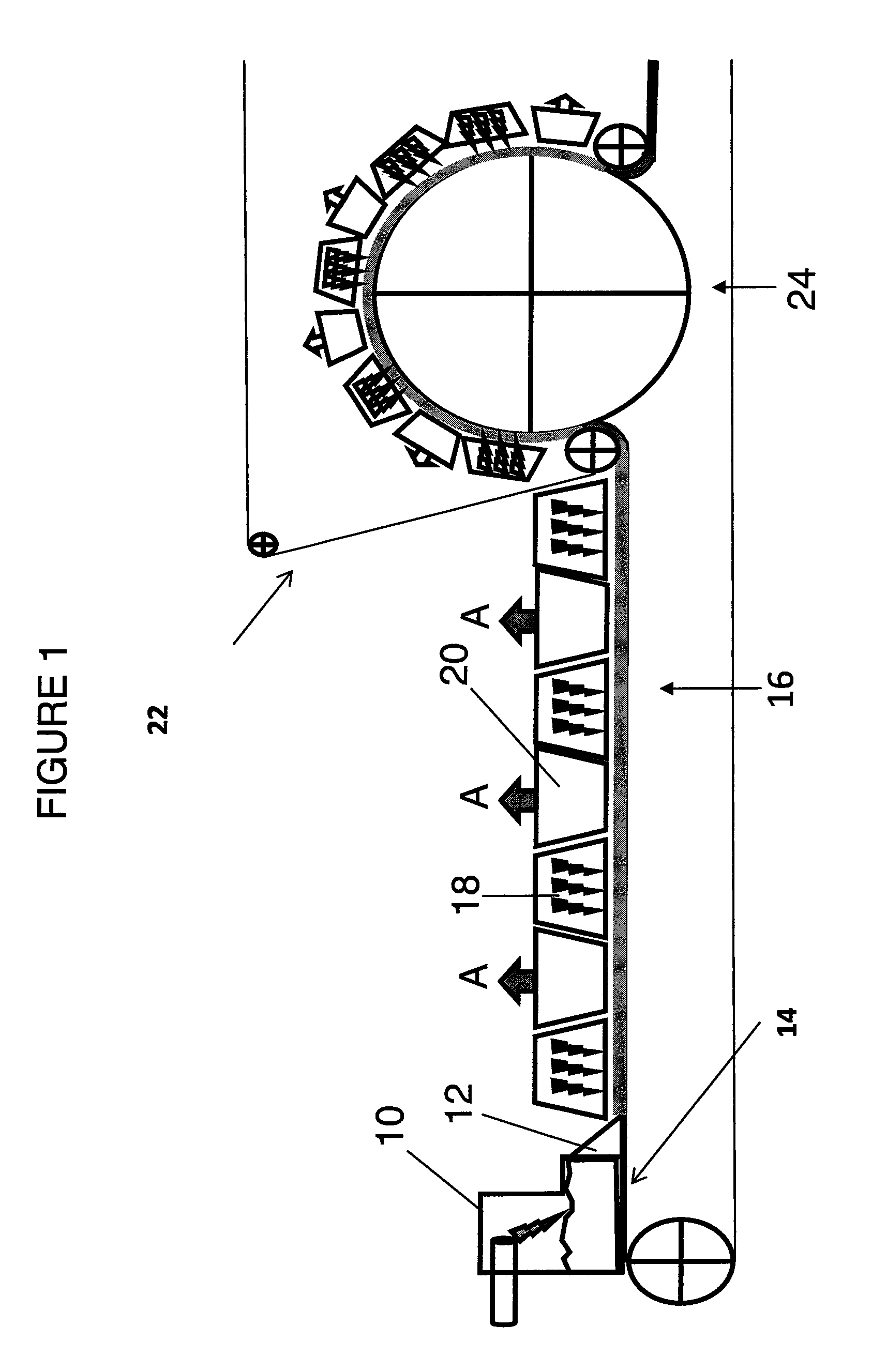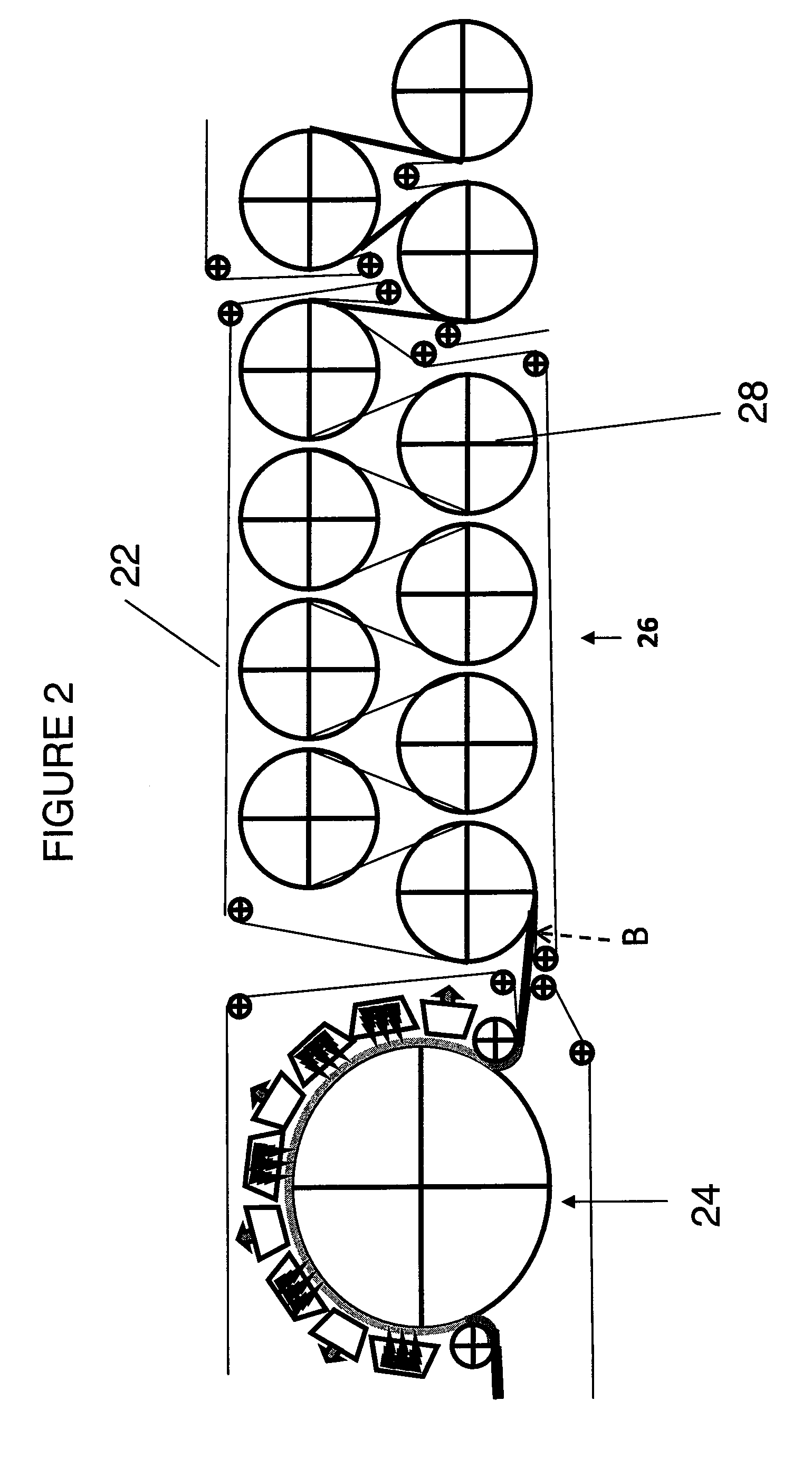Method of manufacturing nano-crystalline cellulose film
a technology of nano-crystalline cellulose and manufacturing method, which is applied in the direction of coatings, pretreated surfaces, layered products, etc., can solve the problems of low release coefficient, lack of flexibility, and only production of nano-crystalline cellulose films and nano-crystalline cellulose-based composite films
- Summary
- Abstract
- Description
- Claims
- Application Information
AI Technical Summary
Benefits of technology
Problems solved by technology
Method used
Image
Examples
Embodiment Construction
[0009]The present invention provides a method of manufacturing nano-crystalline cellulose film using a continuous process. The continuous process includes, but is not limited to, forming, pressing, drying, calendering and finishing the film, whose final state may be in roll or sheet form.
[0010]The method includes the use of a nano-crystalline cellulose suspension that may be prepared using techniques known in the art, including transformative technologies that use cellulosic fibre material from wood or vegetal sources, as described in [1] Wang, Neng; Ding, Enyong; Cheng, Rongshi: Preparation and liquid crystalline properties of spherical cellulose nanocrystals, Langmuir, Vol. 24, Nr. 1, pp: 5-8, (2008); [2] Habibi, Youssef; Foulon, Laurence; Aguioe-Boeghin, Voeronique; Molinari, Michaoel; Douillard, Roger: Langmuir-Blodgett films of cellulose nanocrystals: preparation and characterization, J. Colloid Interface Sci., Vol. 316, Nr. 2, pp: 388-397, (2007); [3] Bondeson, Daniel; Mathew,...
PUM
| Property | Measurement | Unit |
|---|---|---|
| Fraction | aaaaa | aaaaa |
| Fraction | aaaaa | aaaaa |
| Fraction | aaaaa | aaaaa |
Abstract
Description
Claims
Application Information
 Login to View More
Login to View More - R&D
- Intellectual Property
- Life Sciences
- Materials
- Tech Scout
- Unparalleled Data Quality
- Higher Quality Content
- 60% Fewer Hallucinations
Browse by: Latest US Patents, China's latest patents, Technical Efficacy Thesaurus, Application Domain, Technology Topic, Popular Technical Reports.
© 2025 PatSnap. All rights reserved.Legal|Privacy policy|Modern Slavery Act Transparency Statement|Sitemap|About US| Contact US: help@patsnap.com



